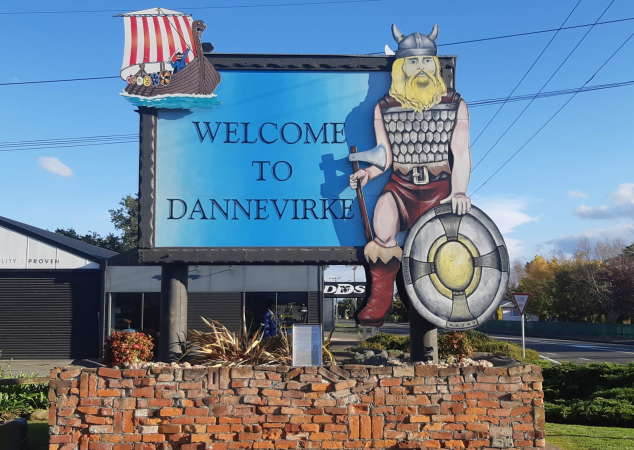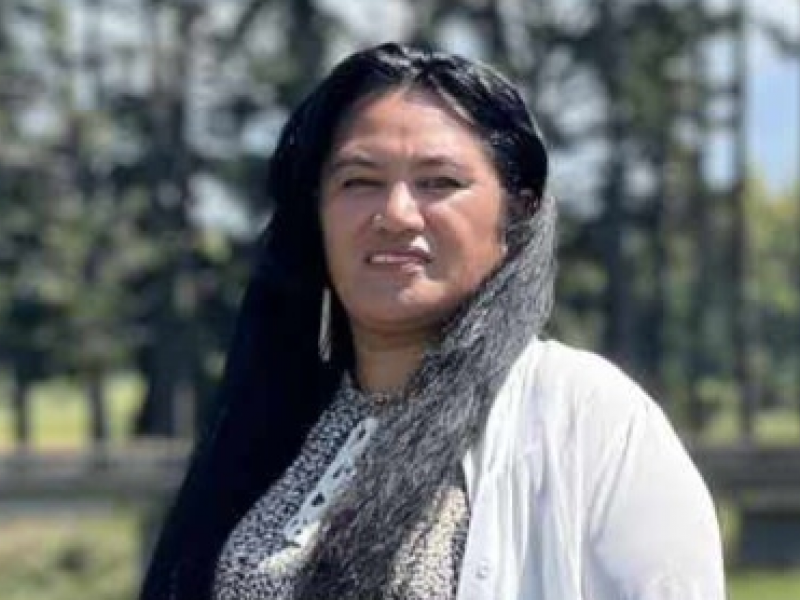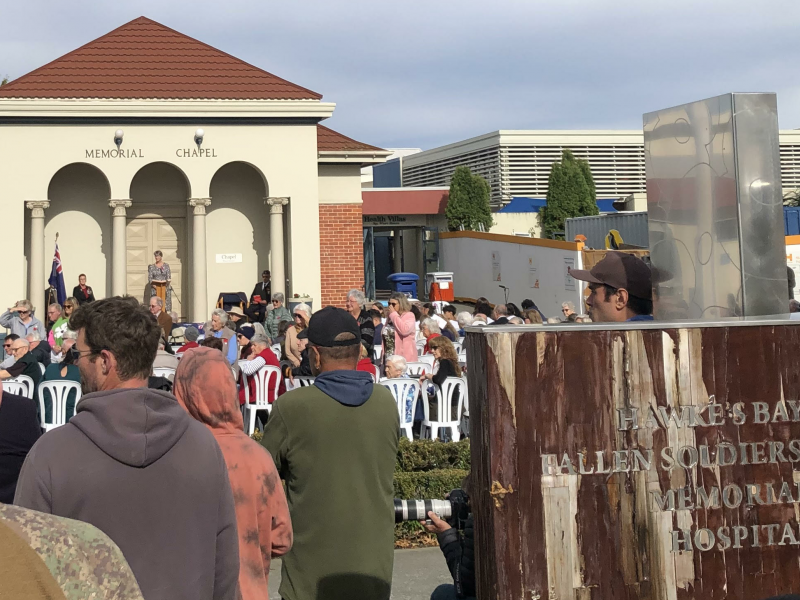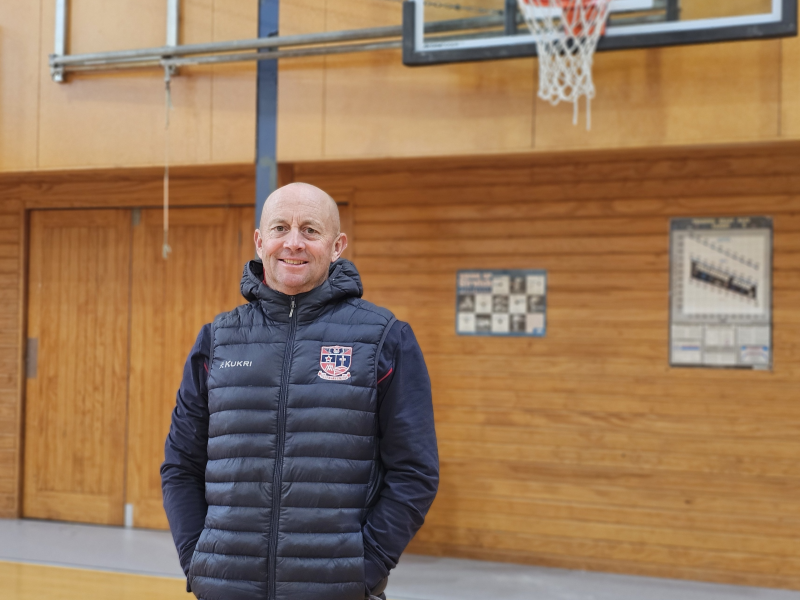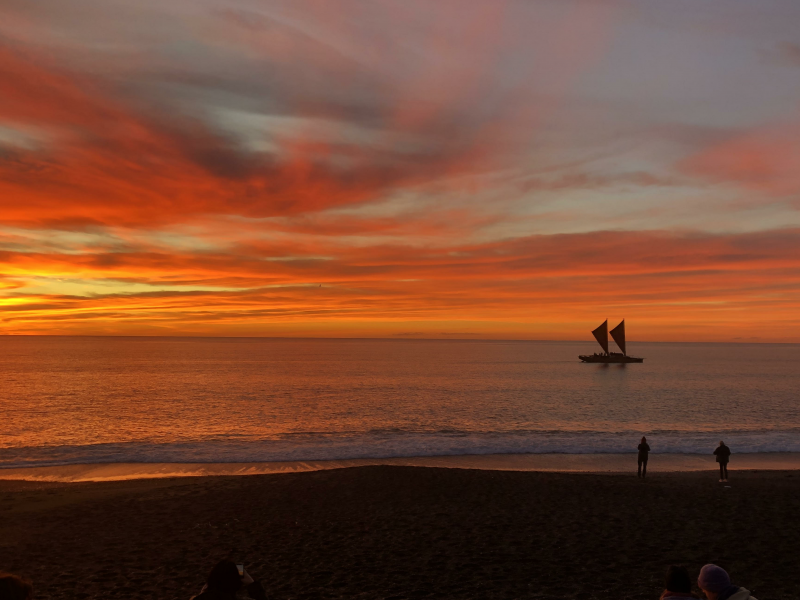Dannevirke: a town that’s changing
Over the years many reasons took me through Dannevirke.
The stately looking Viking on the ‘Welcome to Dannevirke’ sign always brought a welcome relief in my journey from Hastings to Palmerston North.
Frequently I had my football playing son in the car and the golden arches of McDonald’s would stir his attentions.
“After the game!” was my standard reply.
I had never actually ‘stopped’ in Dannevirke. But I did wonder about it.
Now my son has moved away and my days going to contact courses at Massy University are long gone. Potentially, Dannevirke may have always remained in the ‘non-stopped’ basket. That would have been a shame.

Dannevirke has a rich history which is shown in its architecture.
But tides change and when Dannevirke’s own ‘born and bred’ Tony Weber came into my life, Dannevirke and I rekindled our association.
When the chance came for ‘Easter in Dannevirke’ with Tony as my own personal tour guide, I jumped at it.
For those that don’t know, Dannevirke is located on State Highway 2, 101km south-west of Hastings and 55km north-east of Palmerston North. The Ruahine Range rises to the west and to the east lie a chain of hills that include the Whangai, Waewaepa and Puketoi Ranges.
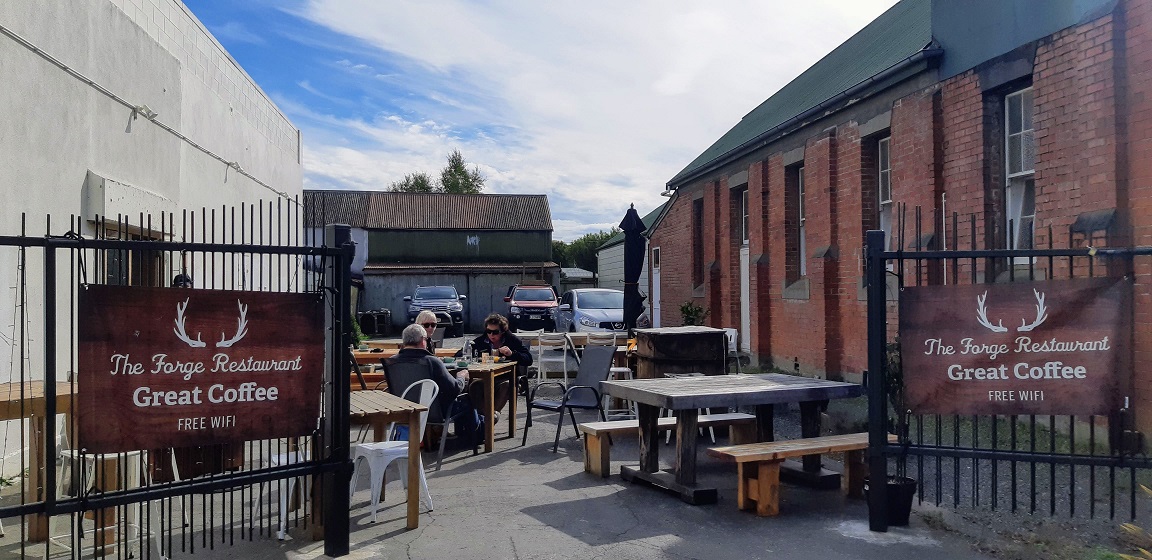
Dannevirke has many great cafes and restaurants.
Dannevirke has a rich history.
Formerly Dannevirke was situated within the densely forested Seventy-Mile Bush, on an ancient Maori trail. Seventy-Mile Bush was originally known as Tapere-nui-a-Whatonga which means ‘the great food basket of Whatonga’.
After many name changes, Seventy-Mile Bush became the Tararua District in 1989 when Dannevirke District Council, Eketahuna County Council, Pahiatua Borough Council, Pahiatua District Council and Woodville District Council amalgamated.
A place name can shed light on a settlement, how people feel about a community. Pahiatua translates to ‘home of the Gods’ and Eketahuna was called “Mellemskov” by the Scandinavians which means ‘heart of the forest’.
Dannevirke was named before the first Scandinavian settlers arrived and translates to ‘a work of the Danes’. The name originally came from ‘Thyra’s Vold’ an impressive system of Danish fortifications that stretch for 30 km. This may have given the settlers a hint as to the amount of work that awaited them!
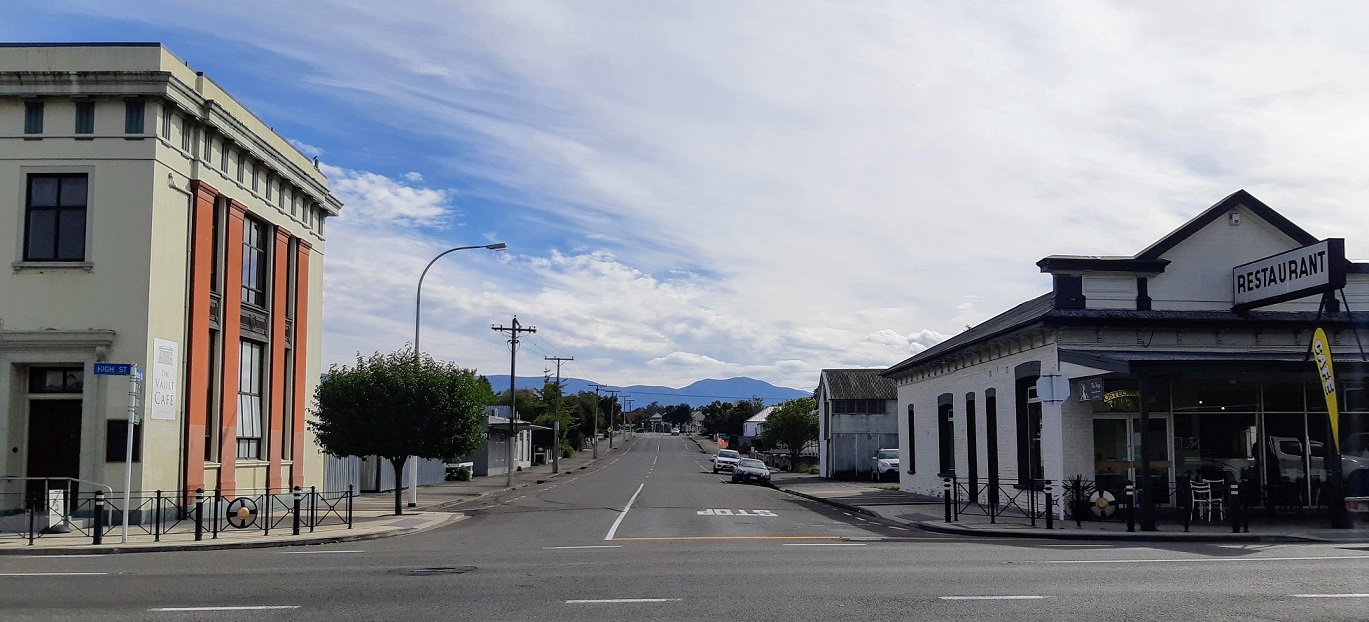
The Ruahine Ranges rise to the west.
The Scandinavian heritage of Dannevirke begun when the Wellington and Hawke’s Bay Provincial Governments jointly purchased Seventy-Mile Bush from Maori in 1872. The town’s purpose was to provide totara sleepers for the Napier-Wellington railway line.
There was a shortage of land in Scandinavia, so the New Zealand Government offered settlers 16-hectare blocks of bushland in return for their work. By 15 October 1872, twenty-one families lived in a cleared section in Dannevirke.
Once the native bush was cleared the surrounding lands were developed into dairy, beef cattle and sheep farms. A new-comer to this ensemble is forestry. Dannevirke became the main service centre for the rural lands that surrounded it.

Tony Weber standing on the much quieter railway line.
For many years Dannevirke thrived on the back of its flourishing farming industry.
Tony recalls: “I remember the times you couldn’t find a park in the main street! The place was full of people. It was a busy, vibrant and very successful town. But as I drove in last weekend, I saw the opposite. Empty shops, empty town. But it was a holiday weekend. I thought the beautiful lower domain would be full!”
The ‘empty shop’ syndrome can be seen throughout New Zealand. Tony notes, that back in his day there was no Warehouse or internet shopping!
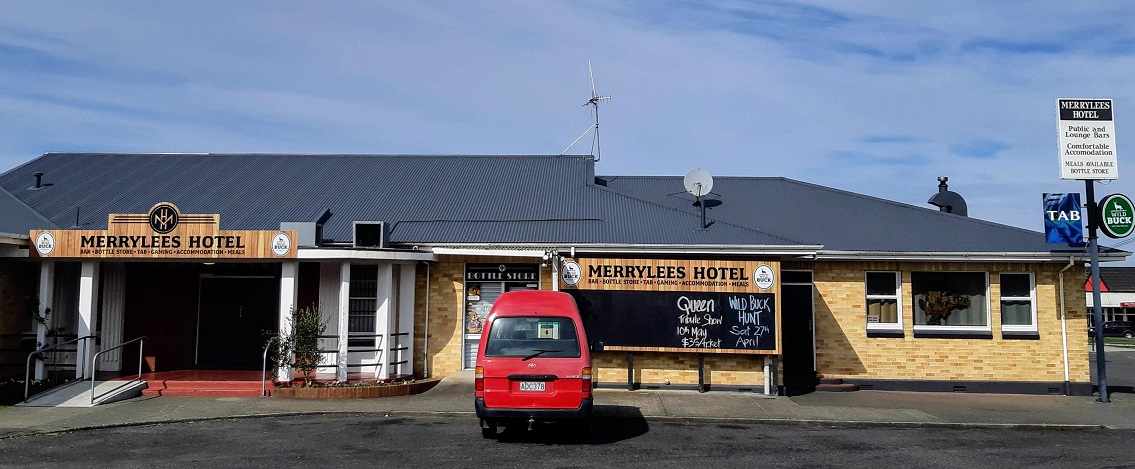
We stayed at the Merrylees Hotel. Many lies are told in this bar!
Dannevirke in its heyday was a vigorous town. Industries such as wool processing, clothing and footwear manufacturing, butter, and casein production, engineering and two operating sawmills ensured employment for the towns folk.
“The saleyards was and still is a very busy operation as is Kiwi Lumber and both engineering outfits in Dannevirke. But like many rural towns in New Zealand, industry came and went. A classic example is the freezing works at Oringi which at its peak employed 800 workers! When that shut down in 2008 it really knocked a hole in the town,” Tony says.
Tony farmed in the dairying district of Te Rehunga which is located 15 minutes south-west of Dannevirke. There are noticeable changes.

The disused Ruahine Dairy Factory.
Tony says, “Many farms have got bigger as neighbours have brought out neighbouring farms. Where there used to be ten or so families owning small farms there is now one. I was interested to see that the local church on Kumeti Road has just been sold and is going to be turned into a house. That is a sign of the times, I guess. The Ruahine Dairy Factory lays idle and the associated housing has shrunk from 15 to 5!”
“When I went to school half the bus would get off there!” he says.
Despite these changes in the community make-up, farming in the district is very successful.
“The farmers left in the district are producing more than they ever have. They are a hardy bunch of hard-working individuals who have built-up prosperous businesses,” Tony says.
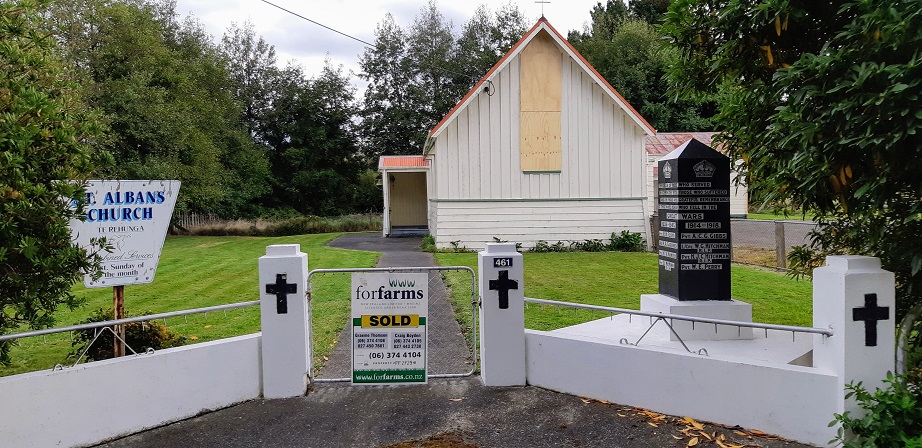
The local church on Kumeti Rd.
Change has had a significant impact on Dannevirke, and the impacts of the tough times are evident. But the town is now showing signs of an up-turn.
Local identity Craig Boyden, co-owner of the For Homes and For Farms real estate businesses, is passionate about the town and its prospects.
He says, “Dannevirke is reaping benefits from its affordable house prices. The average house price is a quarter of the equivalent in Auckland. This is bringing a real mix of people to the town from all over New Zealand”.
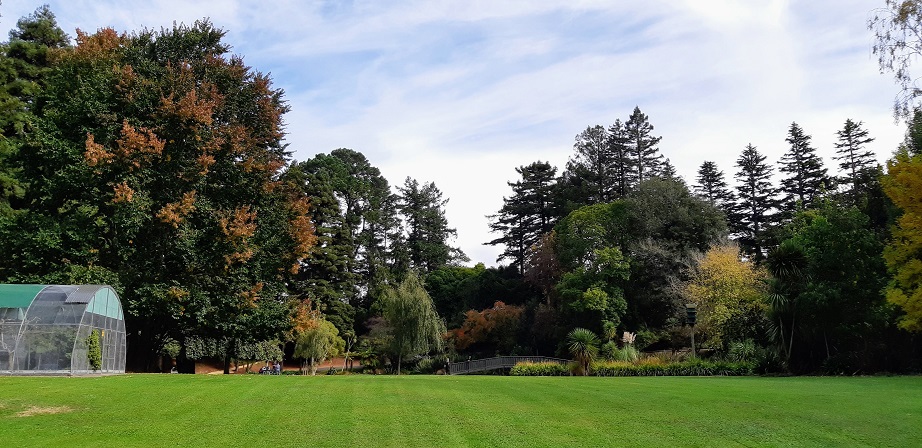
The Lower Domain.
House prices in Dannevirke have followed the national trend.
Craig says, “In 2015 the average house price was $140,000 now it’s $230,000. Which is still amazingly cheap!”
A classic example of how times have changed is the recent sale of the old fire station building in Allardice Street.
Tony says, “I used to flat there when I was a teenager for no rent in return for cleaning the fire engines once a week! To see it described as ‘stylish apartment living’ in its recent sale for $370,000 is amazing. Clearly someone spent a lot of money and time doing it up!”
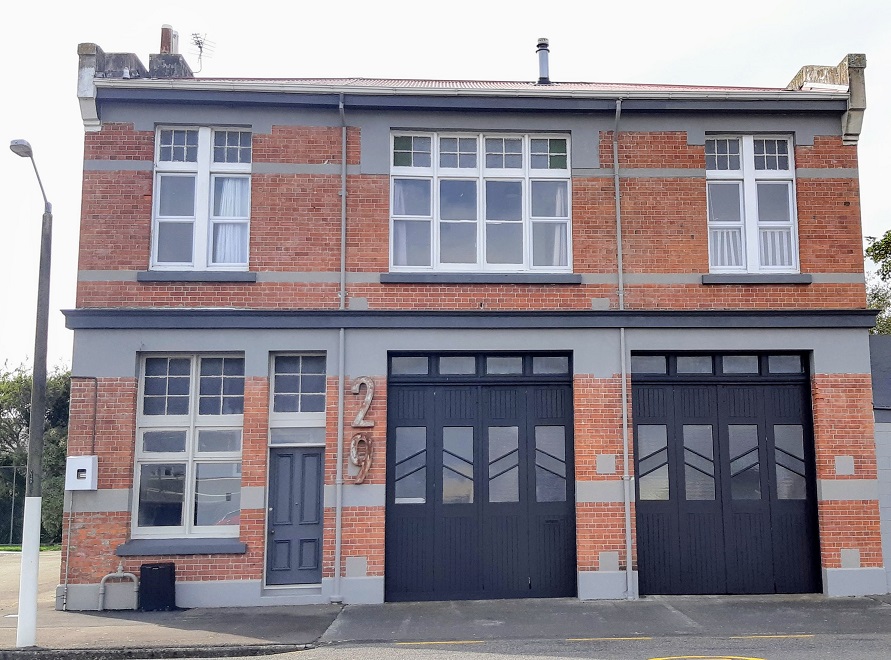
The old Fire Station recently sold for $370,000.
Craig uses his own measures to evaluate the towns success.
“I am the chairman of the Dannevirke Sports Club. The club was created from the amalgamation of the Ruahine, Excelsior, and Old Boys rugby clubs. We now cater for hockey, netball, cricket, football as well as rugby. We have a really good membership of 570 which is 10 percent of the town’s population. This shows a change in the town’s demographic. We are becoming a much ‘younger’ town”.
Another change on the horizon for Tararua is the swing to forestry.
Craig says, “currently there is a drive to purchase marginal land out towards Pongoroa to plant pine trees. This is partly driven by the government’s one billion trees incentive. I have yet to decide whether the town will benefit directly from this or not”.

Norsewear in Norsewood has socks for all occasions and tastes.
Dannevirke’s future looks very bright. The recent sale of the Mangatera Hotel to a young Auckland family who see the town as a great opportunity to get into business at an affordable price, is a great example. There are signs that the town is diversifying and is no longer so reliant on the farming industry alone.
Next time you go through Dannevirke take some time to stop and have a look around. Check out the lower domain, have lunch in one of the town’s many cafés and buy some socks from Norsewood’s Norsewear on the way home.

